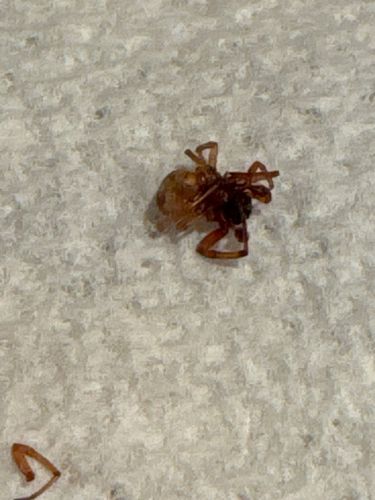Ground Spider (likely a species of Castianeira or Gnaphosidae family)
Scientific Name: Various species depending on exact identification; e.g., Castianeira descripta, or a species within the family Gnaphosidae.
Order & Family: Order: Araneae, Family: Gnaphosidae (Ground Spiders) or Corinnidae (Antmimic Spiders, such as Castianeira)
Size: Typically small to medium-sized, ranging from 3 mm to 15 mm (0.12 to 0.6 inches) in body length, depending on the species.

Natural Habitat
Ground spiders are typically found on the ground in various habitats, including forests, grasslands, deserts, gardens, and urban areas. They often hide under rocks, logs, leaf litter, or debris during the day and come out to hunt at night. They can sometimes be found indoors, especially when seeking shelter from extreme weather conditions.
Diet & Feeding
Mainly insectivorous, feeding on other small invertebrates such as insects and other spiders. They hunt at night, using their speed and venom to subdue prey.
Behavior Patterns
Ground spiders are typically nocturnal hunters, actively pursuing their prey rather than building webs to catch them. They are fast-moving and agile. When disturbed, they may play dead or attempt to quickly flee. They often seek shelter under rocks, logs, leaf litter, or indoors when weather conditions are unfavorable.
Risks & Benefits
Ground spiders are generally considered harmless to humans. While they possess venom, their bites are rare and usually result in only mild, localized pain, swelling, or redness, similar to a bee sting. They are beneficial as natural pest control, preying on various insects and other small invertebrates that might otherwise be considered pests.
Identified on: 8/20/2025